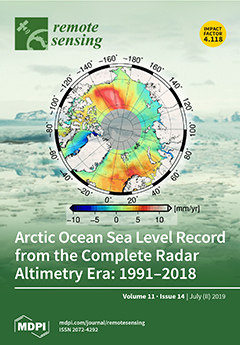Open AccessEditor’s ChoiceArticle
Giving Ecological Meaning to Satellite-Derived Fire Severity Metrics across North American Forests
by
Sean A. Parks, Lisa M. Holsinger, Michael J. Koontz, Luke Collins, Ellen Whitman, Marc-André Parisien, Rachel A. Loehman, Jennifer L. Barnes, Jean-François Bourdon, Jonathan Boucher, Yan Boucher, Anthony C. Caprio, Adam Collingwood, Ron J. Hall, Jane Park, Lisa B. Saperstein, Charlotte Smetanka, Rebecca J. Smith and Nick Soverel
Cited by 62 | Viewed by 11278
Abstract
Satellite-derived spectral indices such as the relativized burn ratio (RBR) allow fire severity maps to be produced in a relatively straightforward manner across multiple fires and broad spatial extents. These indices often have strong relationships with field-based measurements of fire severity, thereby justifying
[...] Read more.
Satellite-derived spectral indices such as the relativized burn ratio (RBR) allow fire severity maps to be produced in a relatively straightforward manner across multiple fires and broad spatial extents. These indices often have strong relationships with field-based measurements of fire severity, thereby justifying their widespread use in management and science. However, satellite-derived spectral indices have been criticized because their non-standardized units render them difficult to interpret relative to on-the-ground fire effects. In this study, we built a Random Forest model describing a field-based measure of fire severity, the composite burn index (CBI), as a function of multiple spectral indices, a variable representing spatial variability in climate, and latitude. CBI data primarily representing forested vegetation from 263 fires (8075 plots) across the United States and Canada were used to build the model. Overall, the model performed well, with a cross-validated R
2 of 0.72, though there was spatial variability in model performance. The model we produced allows for the direct mapping of CBI, which is more interpretable compared to spectral indices. Moreover, because the model and all spectral explanatory variables were produced in Google Earth Engine, predicting and mapping of CBI can realistically be undertaken on hundreds to thousands of fires. We provide all necessary code to execute the model and produce maps of CBI in Earth Engine. This study and its products will be extremely useful to managers and scientists in North America who wish to map fire effects over large landscapes or regions.
Full article
►▼
Show Figures





